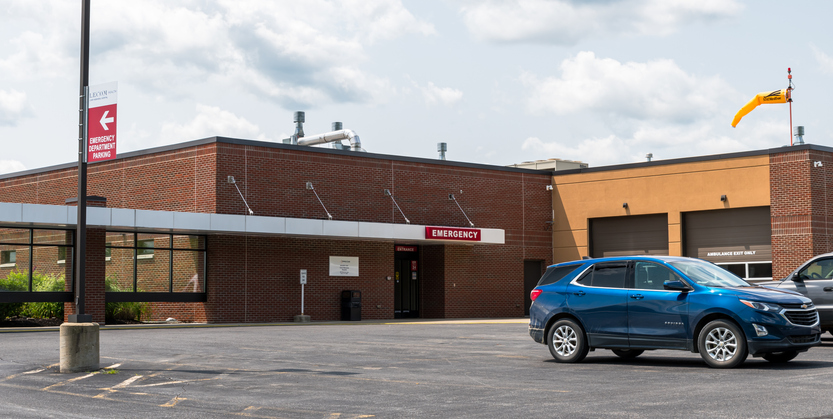Lawmakers in states across the country are working through a spate of bills written to shield a growing source of revenue for large hospital systems and drug chains.
Congress created the 340B drug pricing program in 1992 to help a small set of safety-net hospitals purchase discounted prescription drugs from manufacturers for low-income patients. Over the past ten years, the program has expanded to become the nation’s second largest purchaser of drugs, behind Medicare Part D.
“Profits from 340B markups now account for $66 billion—10% of brand medicine spending—and continue to grow unchecked,” states the drug industry trade group, PhRMA.
An analysis funded by PhRMA by BRG , a consulting firm, says 340B prices average 59 percent lower than list prices, and in some instances are as low as a penny per dose. Hospital systems can distribute the drugs at huge markups and have contracted with large drug chains to sell the discounted drugs at the retail level. The federal government does not require “covered entities” to prove the drug sales are serving the needy.
Powerful Backers
Lawmakers offered a flurry of state bills expanding access to 340B money this year. Bills are working their way through state legislatures in multiple states, including Illinois, Kansas, Massachusetts, Michigan, and Ohio.
“In my experience, it is not a coincidence when you have 20 or so states all introduce some form of legislation, all around the same time in a 12- to 15-month period,” said Cameron Sholty, director of government relations at Heartland Impact. “If you look at all the bills, they appear to have two things in common: they prohibit manufacturers from restricting drugs they want to include in the program, and any sharing of data.”
Sholty, who testified in Ohio and submitted written testimony in Kansas, says it appears hospitals are behind the legislation.
“The One Big Beautiful Bill Act clipped the wings on Medicaid spending, and hospitals saw that as cutting into their revenue,” said Sholty. “The hospitals may see 340B as a way to re-juice their revenues.
“Hospitals have more or less turned into arbitrage machines, buying up 340B-qualifying covered entities so they can purchase even more discounted drugs,” said Sholty.
Surface Nobility
In legislative hearings, state lawmakers have raised concerns about rural hospitals’ financial stability. According to Cecil G. Sheps Center for Health Services Research, 195 rural hospitals have closed since 2005 in the United States.
“The legislators who support the 340B bills are bipartisan and appear to have the noblest of intentions regarding the bills,” said Sholty. “They want to protect struggling rural hospitals, especially.
“However, the backers of the bills, the special-interest lobbyists, are likely driven by the massive profits the program generates for them,” said Sholty.
The 340B program is fundamentally flawed and indefensible, says Sholty.
“In essence, it is a drug price control program which ultimately hurts all patients,” said Sholty. “And its massive reach into so much of the drug market now raises antitrust questions.
“Let’s face it: if the kind of collusion we’re seeing between the hospitals and drug chains were happening in the oil and gas business, there would be congressional hearings,” said Sholty.
Smoke and Mirrors
Another special-interest group that can profit from 340B is the abortion and transgender medicine industries, says Sholty.
“Hospitals can use 340B to get around federal restrictions on that spending,” said Sholty. “Money is fungible, and what they save in one area can be used to support something else.”
The lack of transparency in the program has made it difficult for drug makers to figure out the real demand for their drugs.
“They’re piloting a plane in cloud cover,” said Sholty. “They don’t have any data on how their drugs are being used and in what way. If the drugs are being used off-label, they have no way of knowing that, and for a drug company trying to determine efficacy, that would be helpful information. Data could also be useful if the drug company faced a lawsuit.”
Federal Response Needed
States and hospitals are taking advantage of the federal government’s inadequate disclosure requirements for 340B drug sales, says Sholty.
“Some of these state bills impose prohibitions on pharmacies and hospitals providing any sort of data on how the money is being spent,” said Sholty. “States should stay away from this and let the federal government respond.”
In August, the federal Health Resources & Services Administration (HRSA) announced a model pilot program that could provide more transparency.
Drug makers whose drugs are listed in the CMS Medicare Drug Price Negotiation Selected Drug List would be eligible for the program, which would provide rebates to covered entities instead of off-the-top drug discounts. Rebates could enable the federal government to keep better track of where the drugs are being distributed.
“The lack of accountability has allowed providers to bend the rules to benefit their bottom lines,” said S. T. Karnick, a senior fellow at The Heartland Institute, which co-publishes Health Care News, and author of the Life, Liberty, Property weekly e-newsletter. “340B is an important factor in the explosive growth of the hospital industry, and why small mom-and-pop drug stores are going out of business.
“It’s another example of how a government program robs Peter to pay Paul,” said Karnick.
AnneMarie Schieber ([email protected]) is the managing editor of Health Care News.




